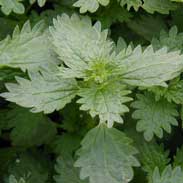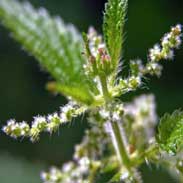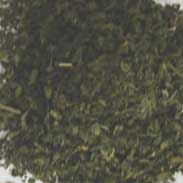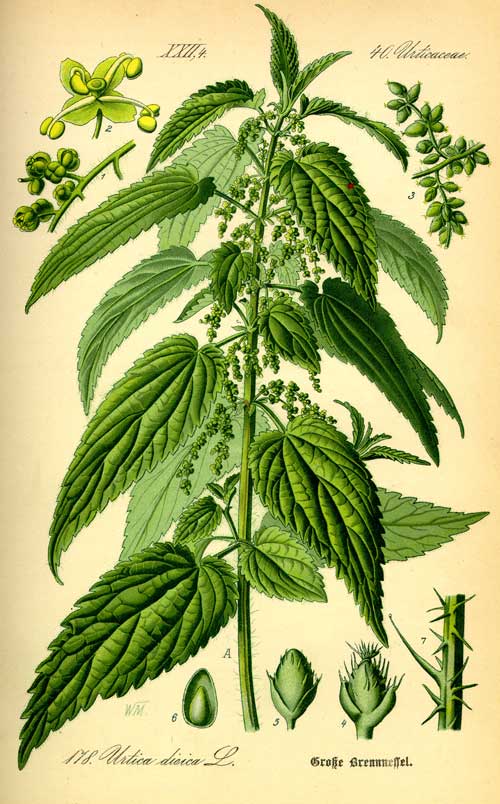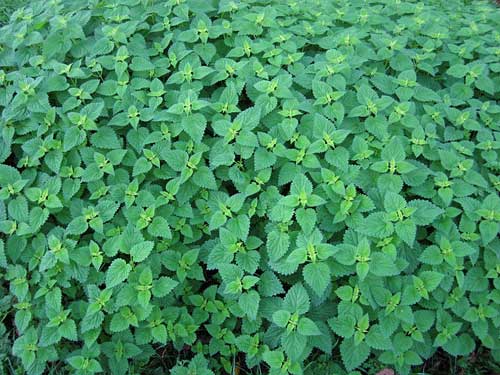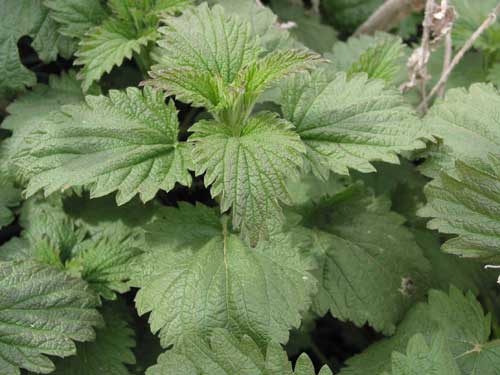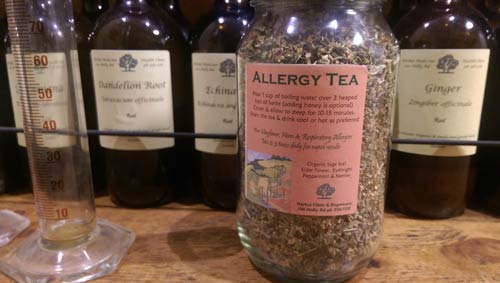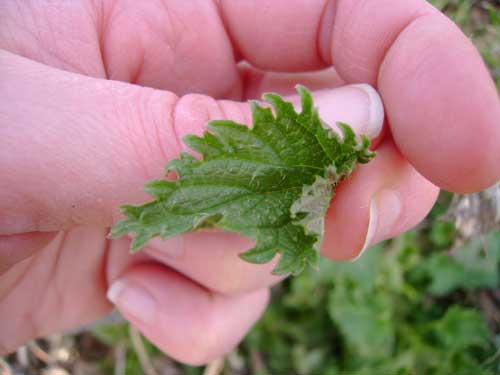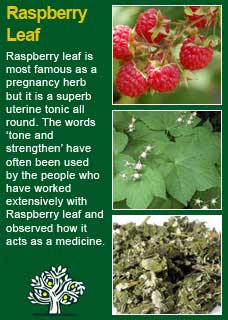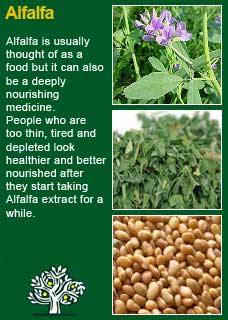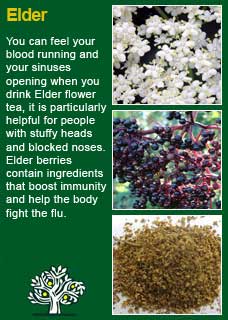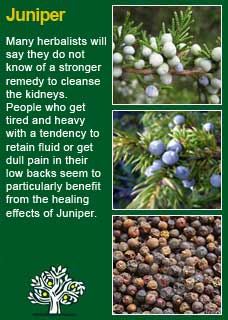
|
|
||||
| Our Pages ABOUT CONSTITUTIONAL MEDICINE
|
In herbal medicine we use the dried leaves of Nettles, a remarkably nutrient-rich herb which has acrid components in its stinging hairs such as formic acid and histamine.
Nettles are a traditional spring tonic for people that had become depleted and deficient through winter. Similarly Nettles has long been used to boost and enrich milk supply in both humans and animals and Nettles have been traditionally used with Raspberry leaf, Oatstraw and Alfalfa as a pregnancy tonic to avoid anemia and support healthy growth. Nettle is recognized as one of the great cleansing herbs and has been widely used for the treatment of rheumatism, gout, kidney stones and chronic skin diseases, especially eczema. Nettles were also very widely used directly for severe joint pain where the practice of 'Urtication' involved taking fresh stinging nettle and rubbing the herb over the affected areas. Of course this hurts somewhat and you can be sure that no-one would have done this if it did not considerably help! F Ellingwood writes 'Urtica has been employed, and is generally agreed to be an efficient remedy, for the general purposes of an astringent, both internally and externally, in hemorrhages, illconditioned ulcers, and in chronic disease of the mucous membranes of the bronchi, bowels and urinary organs' WM Cook writes 'as a local arrester of bleeding, it has few equals; and its infusion or tincture is of much power, used inwardly, for bleeding from the nose, lungs, or stomach, and may also be used to excellent advantage in bleeding from the bowels and passive menorrhagia' M Grieve writes 'Old writers recommended a small piece of lint, moistened with the juice, to be placed in the nostril in bad cases of nosebleeding. Burns may be cured rapidly by applying to them linen cloths well wetted with the tincture, the cloths being frequently re-wetted. An infusion of the fresh leaves is also soothing and healing as a lotion for burns. An infusion known as Nettle Tea is a common spring medicine in rural districts, and has long been used as a blood purifier. It is a strange fact that the juice of the Nettle proves an antidote for its own sting, and being applied will afford instant relief. The juice of the Dock, which is usually found in close proximity to the Nettle, has the same beneficial action. Hoffmann describes the actions of Nettles as 'astringent, diuretic, tonic and hypotensive' and says 'it is one of the most widely applicable plants in the materia medica. The herbs strengthens and supports the whole body. Throughout Europe, Nettle is used as a spring tonic and general detoxifying remedy. It may be very helpful for internally and topically for myalgia and osteoarthritis. It is a specific for childhood eczema and beneficial for all varieties of this condition, especially nervous eczema' T Bartram quotes Hilda Leyel saying 'no plant is more useful in domestic medicine' and in turn he lists many actions for Nettles including; 'blood tonic, hypoglycaemic, antiseptic, tonic-astringent (external) expectorant, vasodilator, hypotensive, galactagogue (increasing breast milk) circulatory stimulant, re-mineraliser, antirheumatic' he also gives extensive indications for its use, including; 'acute, painful gout, to stimulate the kidneys, detoxify the blood, chronic skin disease, feeble digestion due to low stomach acid' He writes 'on taking Nettle tea for high blood pressure, passage of gravel from the urine is possible and shoudl be regarded as a favourable sign' King's Dispensatory writes 'Nettles are astringent, tonic, and diuretic. A decoction is valuable in diarrhoea and dysentery, with profuse discharges, and in hemorrhoids, various hemorrhages, and scorbutic affections, and has been recommended in febrile affections, gravel, and other nephritic complaints. The leaves of the fresh plant stimulate, inflame, and even raise blisters on those portions of the skin with which they come in contact, and have, in consequence, been used as a powerful rubefacient. Paralysis is said to have been cured by whipping the affected limbs with them. Applied to bleeding surfaces, they are an excellent styptic. Some physicians prescribe the remedy internally at the same time that they are using it locally. It is also a remedy for chronic cystitis, with mucous discharges. Warts, rubbed with the freshly expressed juice of this plant, 3 or 4 times a day, continuing the application daily for 10 or 12 days, disappear without any pain being produced' The British Herbal Pharmacopoeia (BHP) says Nettles is indicated for 'uterine haemorrhage, cutaneous eruptions, infantile and psychogenic eczema'; and goes on to say it is specifically indicated for nervous eczema suggesting that it combines especially well with Burdock root. The BHP recommends a dose of 2-4 grams or by infusion (a heaped tsp is about 1.5gms) and the tincture as a 1:5 in 45% ethanol at a dose of 2-6 mls up to 3 x daily.
~ A multicentre surveillance study examined the safety and therapeutic benefit of a nettle leaf extract in nearly 9000 patients with osteoarthritis and rheumatoid arthritis. After a three week period 82% of patients believed that the treatment had relieved their symptoms, 26% no longer required to take anti-inflammatory drugs and 38% said that they were willing to reduce their drug therapy (Buck G. Z Phytother 1998; 19(4):216) ~ Twenty healthy volunteers took 1.34 grams of Nettle leaf extract for 3 weeks. The medicine significantly decreased the release of certain compounds associated with inflammation and tissue damage. Nettle leaf extract has also demonstrated anti-inflammatory activity by other laboratory studies and is believed to work by inhibiting cyclooxygenase and 5-lipoxygenase derived reactions (Teucher T, Obertreis B, Ruttkowski T et al. Arnzneim Forsch 1996; 46(1):52-56) ~ The sting of Nettle leaf has been shown to be beneficial in treating osteoarthritic pain at the base of the thumb or index finger in a randomised, double-blind, controlled, crossover trial. Nettle or placebo was stroked over the painful area daily. Nettle hairs contain high levels of leukotrienes and histamine (Randall C et al: J R Soc Med 93(6):305-309, 2000) ~ Hoffmann writes that Nettle root has been used with sucess to treat the early stages of benign prostatic hyperplasia and studies show that it improves urine flow, reduces urinary frequency and nocturia and decreases the volume of residual urine (Urologie A 1997; 36(4):327-33) ~ The authors, titles and the 'where-and-when' published of over 120 further studies and articles on Nettles are listed in a PDF found here
For some years now, against this proven and safe way of herbalism, there has been a rising tide of excessive caution and scare-mongering in many parts of the world. The same authorities that, not so long ago, decried herbal medicines as ineffectual, have now taken up a different adversarial position; that they are dangerous substances that should only be prescribed by Doctors, who of course have zero training in them. Unfortunately, the same unnecessary fear and worry has crept into many natural health websites and popular publications on herbs. Herbs that we have safely used for thousands of years, that have no reports of adverse reactions in the medical literature despite widespread use by millions of people, are suddenly described as contraindicated because of something that should have been seen as completely unimportant, or at the utmost a merely theoretical concern, such as a laboratory study on one of the herb's constituents to use an all too common example. I wonder sometimes if the writers of such articles feel that the herb will be more deserving of respect if it is thought to be a little bit dangerous, in other words more like a drug than something that has simply come out of the earth and been used by ordinary people for generations beyond count. There is just so much misinformation about herbal medicine on the internet now. Ludicrous claims and cautions abound in equal measure; it seems like one group are trying to make money out of the public whilst the other are busily trying to scare them off. I have to believe that the kind of reader who takes the time to read pages on herbs that are as extensive as this one is much less likely to be swayed by marketers or misinformers. I hope that you will keep your wits about you if you get conflicting opinions from people who have never really got to know these herbs, who have never worked with them, or learned how to use them safely and effectively. I want to remind you that the reason that herbs can never be patented and owned by any individual or corporation is because they are, and always will be, the People's medicine. They belong to all of us and it is my great hope in sharing this work that you will learn how to use them wisely for yourself, and the people you care for. Be safe, but do not be afraid.
For something that is commonly regarded as a nuisance weed at best and a dangerous stinger at worst I have found Nettles to be a remarkably effective health ally in many cases of impaired urinary flow, chronic eczema, hay fever and arthritis; none of which are easy conditions to shift by any stretch of the imagination! I often use Nettles as part of tea or a formula of tinctures that aim to cleanse 'stuck dampness' from the body. It is a powerhouse of a herb, used wisely for the right person it can be the turning point in a matter of days from sickness towards health. Nettles are also a highly nutritive plant to give as a tonic either in food or medicine. The old tradition of using it in spring time to cleanse the heavy congestion of Winter food and lighten the body for the longer days ahead is still wise and good to this day. I often feel an instinct to include Nettles in formulae for people in the spring. It cleanses the blood in a gentle but sure way and is very safe to give to all ages. Another time I frequently think of Nettles is when people have lost a lot of fluid from their bodies, for example from chronic diarrhoea or heavy periods. Here you can see its stabilising and nourishing properties come to the fore and it rapidly helps to restore the depleted energy that comes from such loss. Likewise men who lose their urinary strength as they age often do very well on Nettles. If you who are reading this are studying herbal medicine or perhaps have your own reasons to want to understand this plant ally at a much deeper level then I warmly encourage you to take a cup of Nettle tea or a tsp of its tincture and then, with a quiet and attentive mind, observe for yourself how it makes you feel. Following this ancient practice of experiential learning should give you an appreciation of the 'action' of Nettles and I predict you will be in no uncertainty about how deep reaching is its potency if you do this even just the once! Further to this, if you would like to learn more about the ancient art of pulse testing, a simple but powerful way to ask the intuitive intelligence of the body for its responses to a herb by feeling the pulse whilst giving a tiny dose by mouth, read here Large doses of Nettles may be needed for a rapid effect and this is where the tea of Nettles is probably to be preferred. For example we make an allergy tea that centres on nettle leaf (the formula for this is written up below) or as it is given in the pregnancy tea - details on that here Reasonably high doses may also safely be used in tincture form to see its cleansing, nutritive and healing actions Nettles combines very well with Raspberry leaf in pregnancy as a tonic, it works well with Alfalfa as a tonic for weak blood, with Elder for allergies and with Juniper for a potent cleansing remedy for joint pain, stiffness and congestion.
The dose is 3 full teaspoons into one large cup of freshly boiled water. You cover the cup and let it sit for 10 minutes before straining it off (you could use a tea-pot or coffee plunger etc. to do the infusion). It is ok to add honey and you need to sip the tea whilst it is still hot to get all the benefits. I have a high success rate with seasonal hay-fever and hives using this formula.. Don’t expect the tea to work immediately like an anti-histamine might but most people do start obviously responding to the treatment if they have two doses a day for at least three days.
You can try this by getting some fresh nettles (very easy to grow in a pot at home if this turns out to be an effective aid) and then developing the practice of brushing or rubbing the affected area with a leaf. Yes it will certainly sting but there may be a great deal of relief subsequently and, as anyone with a deep joint ache knows; there are worse kinds of pain! If it will really help you then you will know about it from the first treatment and then you may wish to try it again, in which case read the following.
Much of the information here about the traditional uses of Nettle leaf is consistent with the model of thinking whereby one may treat problem A with plant B. There is value in this approach, especially in how it helps us pass on useful knowledge to one another, but it falls short in one vital area; and that is that people are not all cut from the same cloth! Something that works brilliantly for one person may do less for another -- why is this? Part of the reason is that people vary in their constitutions as to whether they are either hotter or cooler and, at the same time, either dryer or damper. This useful and rather fascinating subject is introduced further here Another big part of using the right herb when it is most needed comes from understanding the need to treat what is going wrong for the person that had led up to their getting a health condition. In this light, Nettle leaf can particularly offer its benefits when a cleansing action is needed in the 'cycle of healing', more about this here
Please understand that I cannot advise you, including on products or dosage, without seeing you in person in my clinic but for ideas
on how you might find a good herbalist in your area read here |
|
|
© 2011 R.J.Whelan Ltd

